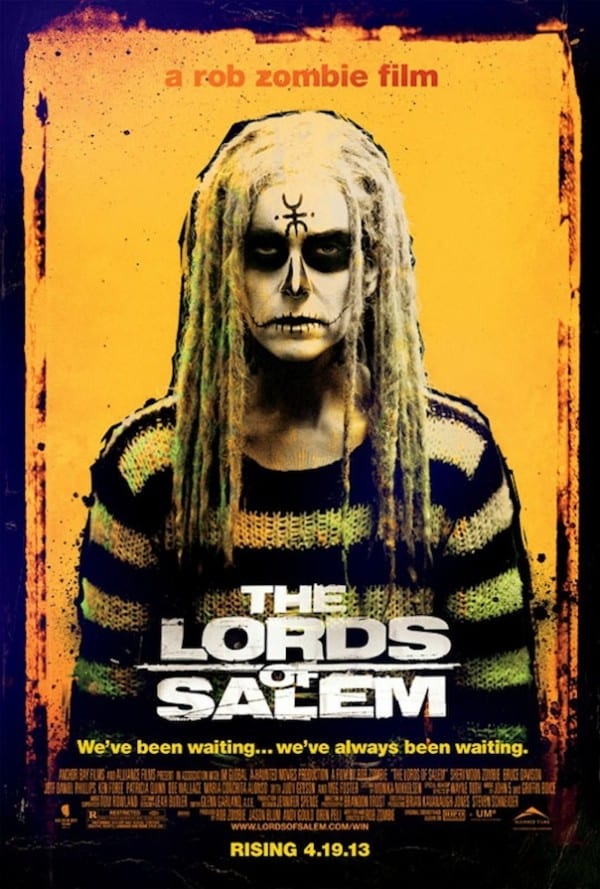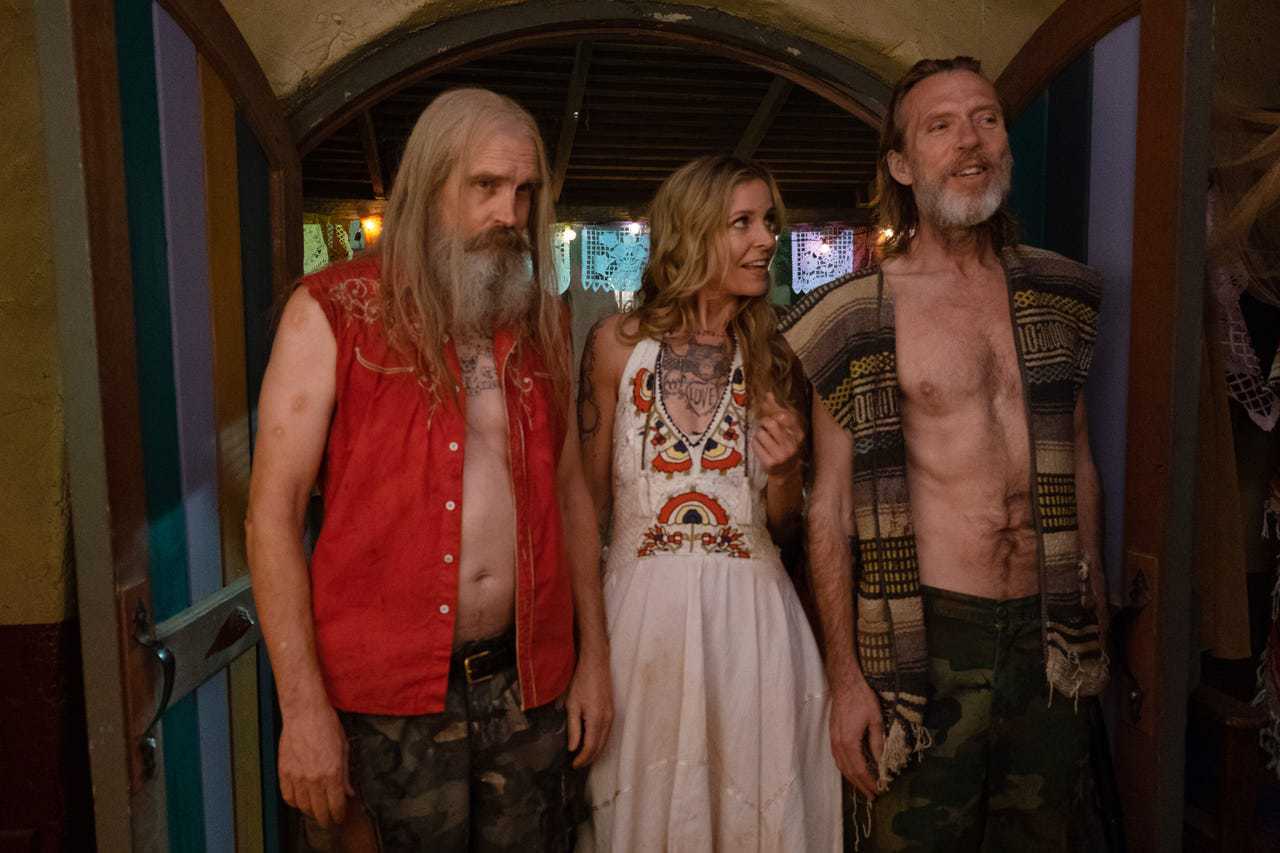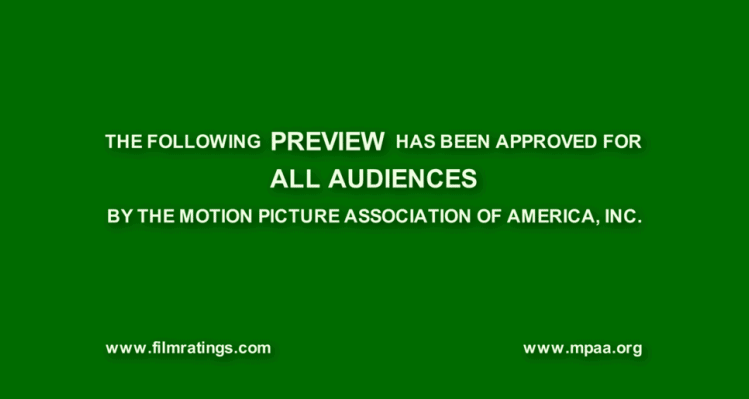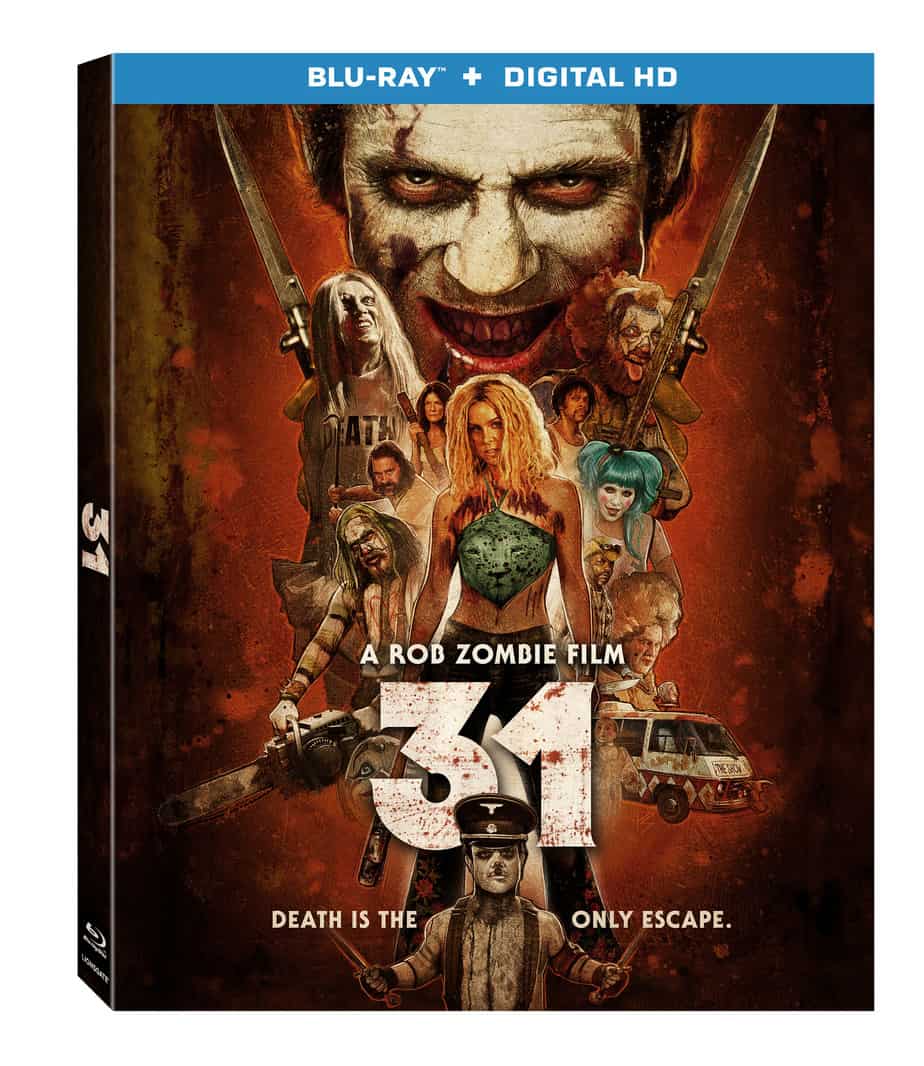
Movie Review: ‘THE LORDS OF SALEM’
The spirit of an ancient witch has been resurrected and is after the soul of an innocent woman which leads to . . . blah blah blah . . . you get the idea. An all too familiar song and dance number is given a face-lift for modern horror fans but with an undeniably retro feel. Director Rob Zombie has been heavily influenced by 70’s horror films over the course of four live-action films and one animated feature, and his new film is here to further reiterate that fact. While many fans will be quick to point out the departure The Lords of Salem takes from the gritty, “trailer trash horror” in-lieu of a more focused and controlled filmmaking style, but even with a more restrained technical approach, Zombie is far from conventional with his use of grand guignol imagery. Especially towards the final act, this crazy train of a film topples off the rails, and the visuals taken an even further descent into hell.
The rocker turned director has always had a stronger eye than a crafty tongue; an accomplished wordsmith he is not. The Devil’s Rejects is the only film where the marriage between the script and the visuals seemed to have worked the best. As a result, I still consider that film to be his strongest along with being one of the best horror films in the last decade. Here, he is even less interested in the dialogue and script than ever before. In fact, it’s almost non-existent and completely pointless in hindsight. Taking Heidi Hawthorne’s (Sheri Moon Zombie) advice when she is confronted with a new vinyl record might be the way to go- “Turn that down, it’s giving me a headache” – I would almost prefer the film consisting only of John 5 and Griffin Boice’s haunting score set to Brandon Trost’s cinematography. The result would make for a far more compelling film than the awkward banter Zombie forces his actors to deal with. Only until about twenty-five minutes in are we treated to a dialogue sequence that feels truly compelling. Heidi is pressured to enjoy some wine with the three “women” (it shouldn’t even be considered a spoiler to tell you who they really are) and the scene gives way to a tense showdown where we finally see Heidi as a victim. At the film’s core, we are supposed to sympathize with Heidi as she spirals into a state of madness. Not unlike Mia Farrow in Rosemary’s Baby or Catherine Deneuve in Repulsion, Heidi is presented as an innocent victim or the “every girl.” This might have worked if Zombie would have composed a stronger lead on paper or if his wife had some stronger acting chops. Outside of a few adequate scenes hinting at a potential romance between a fellow radio shock-jock, Sheri Moon Zombie’s rocker-chick character is shown walking a lot. Yeah . . . she walks a lot . . . that’s it. Maybe it’s a nod to John Carpenter’s character Laurie Strode, but Heidi is seen walking several times throughout the film – to work, home from work, through the park, to a vacant church – all the while lens flares grace the screen. Having your lead character wear her personality on her sleeves (literally) with her tattoos, piercings, and dread-locks hardly makes for a bewitching character.
Who ends up stealing the show is Meg Foster as the enigmatic head witch Margaret Morgan. Her face lit by the flames of a glowing fire accompanied by her scratchy voice (not unlike that of a record player needle being dragged across a vinyl 45) is one of the more simple elements of the film in comparison to what’s to come and yet also the creepiest element of the film. Foster’s modern day followers are played with a maniacal calmness by Dee Wallace, Patricia Quinn, and Judy Geeson. All three cult actresses make more of an impression in their handful of scenes then our sullen main protagonist. Maybe that’s the intention of Rob Zombie. Maybe we are supposed to be rooting for the coven to brake Heidi’s frail body and mind. I could accept this if only Zombie’s script didn’t try to make us sympathize for her struggle before the final act using a half-baked drug addiction sub-plot. What’s even more distracting is a subplot involving an author trying to put together the pieces surrounding the mysterious record by The Lords, the history of the witches, and Heidi’s connection with all of it. A scene involving the author conducting research through a quick Google search leads to the biggest “hand meet face” reaction I have experienced while watching a film recently.
For what it’s worth, The Lords of Salem might be the first film in his career that demands to be seen in the theaters on the big-screen. Grand scenes are displayed in symmetrical stagings involving witches, satanic ceremonies, and zombified priests. Depending on your sensitivity of such religious iconography as well as your knowledge of some previous genre films, this assemblage of hellish symbols may or may not shock you. Being a big fan of British cult director Ken Russell, I couldn’t help but recall similar images found in his iconic The Devils and the cheesy goofiness of Lair of the White Worm. A quick search on YouTube of those film’s trailers might give you an idea of what to expect. Wayne Toth once again displays great skill at creating some impressive special effects. His level of craftsmanship makes some of the more disgusting and grotesque scenes all the more unpleasant.
Rob Zombie seems to almost make an argument for the resurgence of Satanic cult films as a new genre to be reckoned with. Even with its familiar genre tropes and similarities to previous films, The Lords of Salem seems to not be too concerned with its relation to its very influences. It’s as if Zombie himself has come to terms with the fact that his films are modern day homages to classic horror cinema; much in the same way that Tarantino has embraced this fact as well. Take it or leave it, Rob Zombie is still one of the few directors working in horror that has made a name for himself by presenting a style in his own loud and in your face fashion. Yes, that fashion is strewn up using psychedelic patterns from 60’s and 70’s cinema, but it is still done with a level of skill and a love for the genre that the rocker turned director wears prominently on his sleeve.



